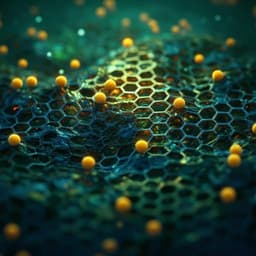
Environmental Studies and Forestry
Towards a model for road runoff infiltration management
L. Maurer, J. Zumsteg, et al.
This exciting study by Loïc Maurer, Julie Zumsteg, Carole Lutz, Marie Pierre Ottermatte, Adrien Wanko, Dimitri Heintz, and Claire Villette delves into the management of road runoff micropollutants through advanced metabolomic analysis and soil property assessment. Discover how the infiltration pond plays a vital role in safeguarding the environment by retaining up to 86% of harmful micropollutants!
Playback language: English
Related Publications
Explore these studies to deepen your understanding of the subject.







